Advertisements
Advertisements
Question
The radius of curvature of a spherical mirror is 20 cm. What is its focal length?
Solution
Radius of curvature, R = 20 cm
Focal length (f) = `R/2`
f = `R/2`
f = `20/2`
f = 10 cm
Hence, the focal length of the given spherical mirror is 10 cm.
APPEARS IN
RELATED QUESTIONS
If the image formed by a mirror for all positions of the object placed in front of it is always erect and diminished, what type of mirror is it? Draw a ray diagram to justify your answer. Where and why do we generally use this type of mirror?
It is desired to obtain an erect image of an object, using concave mirror of focal length of 12 cm.
What should be the range of distance of an object placed in front of the mirror?
To construct a ray diagram we use two rays of light which are so chosen that it is easy to determine their directions after reflection from the mirror. Choose these two rays and state the path of these rays after reflection from a concave mirror. Use these two rays to find the nature and position of the image of an object placed at a distance of 15 cm from a concave mirror of focal length 10 cm.
A spherical mirror produces an image of magnification -1.0 on a screen placed at a distance of 30 cm from the pole of the mirror.
(i) Write the type of mirror in this case.
(ii) What is the focal length of the mirror ?
(iii) What is the nature of the image formed ?
(iv) Draw the ray diagram to show the image formation in this case.
A concave mirror produces three times magnified image on a screen. If the object is placed 20 cm in front of the mirror, how far is the screen from the object.
Three students A, B and C focussed a distant building on a screen with the help of a concave mirror. To determine focal length of the concave mirror they measured the distances as given below:
Student A : From mirror to the screen
Student B : From building to the screen
Student C : From building to the mirror
Who measured the focal length correctly ;
(a) Only A
(b) Only B
(c) A and B
(d) B and C
If an object is placed at the focus of a concave mirror, where is the image formed?
If an object is at infinity (very large distance) in front of a concave mirror, where is the image formed?
Described with the help of a diagram, the nature, size and position of the image formed when an object is placed beyond the centre of curvature of a concave mirror.
The real image formed by a concave mirror is smaller than the object if the object is:
(a) between centre of curvature and focus
(b) at a distance greater than radius of curvature
(c) at a distance equal to radius of curvature
(d) at a distance equal to focal length
What is the position of the image when an object is placed at a distance of 20 cm from a concave mirror of focal length 20 cm?
An object is placed at a distance of 10 cm from a concave mirror of focal length 20 cm.
Calculate the image distance.
How far should an object be placed from the pole of a converging mirror of focal length 20cm to form a real image of the size exactly `1/4`th the size of the object?
Complete the following diagrams in figure by drawing the reflected rays for the incident rays 1 and 2 if F is the focus and C is the centre of curvature.
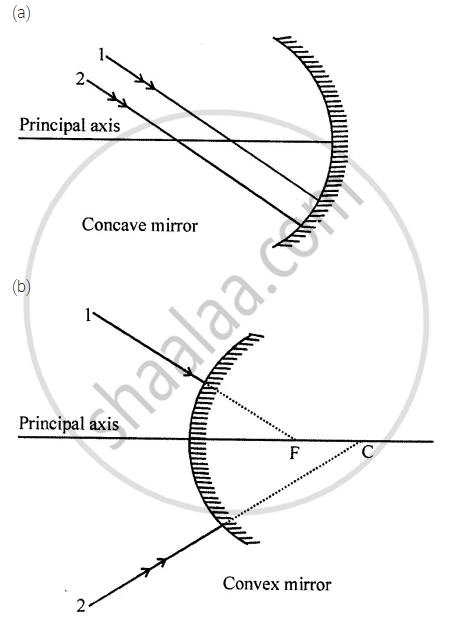
To find the focal length of a concave mirror Rahul focuses a distant object with this mirror. The chosen object should be
(1) a tree
(2) a building
(3) a window
(4) the sun
Why are concave mirrors used in solar devices?
In which equipment/s do you find ___________________
Which of the following ray diagrams is correct for the ray of light incident on a concave mirror as shown in figure?

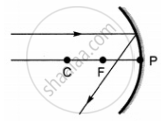 |
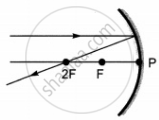 |
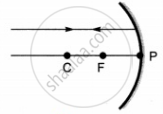 |
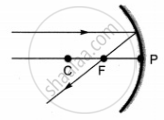 |
| A | B | C | D |
In torches, searchlights, and headlights of vehicles, the bulb is placed ______ of the concave mirror.
To obtain an image twice the size of the object, between which two points related to a concave mirror should an object be placed?
